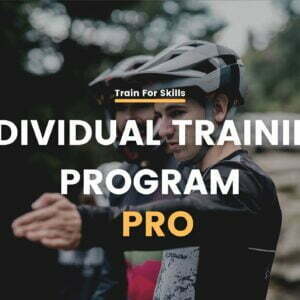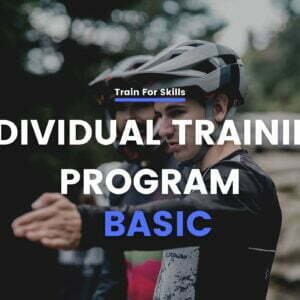Regeneration part II – practical advice
Reminder: one of the many things that separates professional athletes from amateurs is regeneration. It is crucial in our training process. What is worth doing? What should you rather avoid? When and how? What effect does it have on my body and mind? The second part of this article is below – with answers to your questions. If you haven’t read the first one yet – go back to it!
Routines, forms of regeneration that should be included in your daily life:
Here I wanted to touch on forms of active regeneration that are activities that will take us very little time each day, some even everyone already does, and for, as I mentioned, the other 20% of athletes can make a significant difference.
1) Basic recovery – walking
One of the most fundamental movements known to man perfectly accelerates the recovery of the body, especially legs, hips and spine. It accelerates blood and lymph flow, cleansing us of metabolic ‘waste’. It is a great rehabilitation tool if you have a problem with the spine – but the condition is one, it must be a brisk walk, about 6-8km/h. Along with the work of arms we set our pelvis in motion, which reduces muscle tension of lower back section.
Walking and hiking are great for unplanned, spontaneous activity (NEAT – non-exercise activity thermogenesis), and can also help to burn fat effectively. 10,000 thousand steps equals about 500kcal burned by walking. 20-30 minutes of such low-intensity activity (up to 50% VO2max, typically 110-130 heartbeats per minute) would be a good choice. You can aim for 10,000 – 12,500 thousand steps, for counting you will be helped by an app that you can find or can download on any phone or sports watch/band.
2) Rolling – or self-massage as recovery
Extremely inexpensive but also an effective way to bring relief to your body after competitions, on your day off or after workouts. In addition to increasing blood flow and enhancing nutrient exchange by cleansing muscles, it also stimulates receptors in the nervous system, reducing the feeling of tissue stiffness. Research has shown that rolling relieves fatigue, muscle soreness (commonly known as ‘sore muscles’ or DOMS – Delayed Onset Muscle Soreness), and improves muscle performance. In addition, it is also a way to keep the body in good shape/function over several days of competition, which aids in injury prevention.
Importantly, rolling too often and too deeply can have the opposite effect, so unless you are training very intensively where it may actually make sense to do it every day, 3-4x a week is more than enough. Remember that rolling still does not replace working with a physiotherapist. Every more ambitious athlete should think about it.

3) Massage/ manual therapy – ART, dry needling, bubble therapy, kinematic chain manipulation
These are among the many techniques and methods that can aid our recovery. If you have the opportunity (and you are a more ambitious athlete) use a physiotherapist at least once a week (max 2, unless you are overtraining). Massage can increase ligament and muscle flexibility and has a relaxing effect on the body. Massaging the neck area is calming – it slows the heart rate and metabolism. Massaging the lower back, on the other hand, has the opposite effect – it stimulates.
4) Mobility sessions – another form of active recovery
Its purpose is to keep your body in the highest possible condition. A form of injury prevention that you can use all year round as well as the moment when you work on your limitations. Tight tissues, lack of range of motion, lack of mobility in joints, low flexibility, dysfunction or movement errors – this is the time to work on them. Personally, I use these sessions 1-2 times a week, 45-60 minutes each. Between the ‘relaxation’ exercises you can add a fitness element, e.g. 500m on a rowing ergometer, 2 min on a skipping rope/run/airbike/stationary bike, etc. This increases blood flow in the body as well as increasing your ‘work volume’ by having an additional session with a conditioning element. Remember to ‘consolidate’ your newly gained range of motion with a strength exercise of your choice after each relaxation/increase in range of motion. Literally 1-2 sets of 8-12 repetitions with not much weight are enough. Remember also that the best mobilization is full range of motion strength training.

5) Contrast hydrotherapy – or alternating cold and warm water
This mixture makes our blood vessels alternately contract and dilate, which improves circulation, reduces congestion and inflammation, aids digestion, and stimulates internal organs to function. Use 3-4 cycles of 30s in cold water (10-12 degrees Celsius) followed by 2 minutes in warm water (40-45 degrees Celsius). This (warm/hot/contrast) bath is best used after strength/speed training.

6) Cold therapy – ice bath/cold water/cold showers
One of the best ways to recover after a hard performance/endurance workout (not strength!). For a long time there have been wars about what temperature is best, but many studies show that going below 8-10 degrees Celsius has no additional benefit. An additional benefit of this method is that it builds immunity. You can use the cold every day, use a 12-15 minute bath in 8-10 degree water.

7) Bathing in bitter salt
Due to the content of sulfur and magnesium, bitter salt is excellent for improving the condition of the body. It has regenerating, deacidifying and detoxifying properties. It is an easy way to relax muscles, reduce inflammation and increase magnesium levels in the blood. Additionally, this technique prevents bloating due to excessive water retention. A 10-15 minute bath in warm water with 200-400g of bitter salt will be sufficient. It is best to take such a bath just before going to bed.
8) Sauna
It can be beneficial as a way of renewal. Using a sauna twice a week (temperature 60-140 degrees C, humidity 5-15%) is recommended as a way to remove general fatigue. I would not recommend using the sauna immediately after a workout. It is like ‘adding oil to the fire’.

9) Active recovery – regeneration ride / turnout
A cycling classic that we can’t forget in our discipline. Loose spinning in 1-2 heart rate zone for 30-60 minutes (or up to 90min if you are so inclined). Ideal for the day after the competition or a free training day during the season.
Some practical advice – recovery with multiple workouts per day (the part for the ambitious athletes):
- If you train 2+ times a day and feel like you’re running low on energy one way to replenish it effectively is to take a nap. Improving brain function and sharpening your senses are additional benefits. It should last about 15-30 minutes or (if you need it) about 2h. Sleeping for 30-60 minutes you will be more tired than rested, and this is due to the sleep phases that our brain enters while sleeping. For a double effect for a shorter nap (aka ‘power nap’), drink your favorite coffee right before you go to bed. When you get up the caffeine will kick in. Regeneration is also something we can plan for.

- Not replenishing energy straight after endurance training only wastes its effect. It’s best to eat one or even two post-workout meals. The first 15-30 minutes after the workout is the so-called ‘window’ for carbohydrates. Our muscles are then more sensitive and susceptible to take in nutrients and store more energy. During this time you should take in about 1-1.2g of carbohydrate per kg of body weight. More can cause intestinal problems, and less is insufficient. On the other hand, combining ‘carbs’ together with protein will give us the best results. Studies show that you should take from 6 to even 20g – depending on the type and intensity of training or your weight.

- The first meal maximizes the regeneration processes, rebuilds the used up glycogen reserves, but it is not enough. The second meal should be eaten within 2 hours after training. It should be wholesome, contain plenty of vitamins, quality fats (approx. 10g), protein (15-20g) and carbohydrates (approx. 1-1.2g/kg body weight, preferably complex). Fat promotes appetite control, has a positive effect on our joints and nervous system, and is essential for the absorption of certain vitamins from food.
- The general distribution of macronutrients during the day should focus a larger supply of carbohydrates in the meals around-training (2-3h before-after), while larger amounts of fats in those away from it. For example, when training in the morning the best choice is to eat a full meal for dinner the day before, while in the morning focus on lighter foods, rich in carbohydrates, preferably complex (but don’t exaggerate! Not everyone likes large amounts of them). Vice versa – when training in the second part of the day it’s worth eating a full breakfast, then lighter meals during the day, and after the training again a full meal, preferably a dinner.
- It’s also worth remembering to have an adequate supply of proteins during the peri-training period, especially after and during training. Training twice a day all depends on what time it will be, what kind of workout it will be and also our personal preferences. There are several rules according to which we can arrange the distribution of macronutrients and calories of meals. From experience I can advise you to experiment with it and find the best solution for you. Some people prefer to be slightly hungry all day so that they can ‘fill up’ in the evening, while some need to eat evenly all the time.

- During endurance training (depending on the length and intensity of the workout) make sure you supplement carbohydrates in a simple form. This can be for example energy bars, gels, bananas, jellies etc. If it is an intensive effort instead of water it may be better to use isotonic drink (ready/powdered/concentrate) to supplement the lack of electrolytes (sodium, potassium, chlorine), which are very important, especially in summer when we sweat more intensively than in winter (driving in the field). A general rule of thumb is to drink approx. 600 ml (1 bottle) per 1 hour of intense exercise. Before the workout you should also take care of proper hydration, theoretically we should replenish about 50% of the water lost.
- One practice we see athletes doing is jumping into an ice bath straight after or between workouts. Indeed, this can be an especially useful practice in the summer. It is not uncommon for temperatures to be high during the interval and between heavy training sessions in one day. The purpose of such a procedure is to cool the body, relieve pain, and rest. From experience I can recommend this form of recovery, but don’t overdo it so you don’t freeze too much! Instead of an ice bath / cold shower (or a barrel, if you have access to one) you can also use cold compresses on selected parts of the body (also helpful for sore / bruised muscles after a strong ‘crash’ on the bike). This is also a method that works great in the short term. But remember that it is not a substitute for solid fundamentals.

Summary
Wisely planned regeneration is the key. As you have already noticed, how much you should train is strongly dependent on how fast you recover, which is influenced by many factors. Pick the techniques that work best for you or that you can use regularly, but don’t forget the basics! Even the best massage is no substitute for a full night’s sleep or healthy eating on a daily basis.
Bibliography:
- Periodization Training For Sports, T. Bompa, C. Buzzichelli
- Secrets of motor preparation in sport, A. Pacek, M. Babiarz
- 365 Advanced Training Hints, A. Pacek, M. Babiarz
- Bike&Cook. The Cyclist’s Culinary Guide, J. Podkowska, M. Kekusz, T. Kołodziejczyk




